Vanished World
Photographs of
Roman Vishniac
Mara Vishniac Kohn and
Miriam Hartman Flacks,
Editors
(University of California)
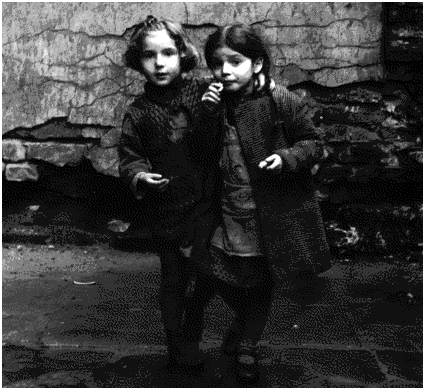
Out of the sixteen thousand photographs that Vishniac took, seventy have been selected for this volume. On the pages facing the photos are Jewish children's songs, poems, and rhymes, given in the original Yiddish with translations by Miriam Flacks. In some cases, the musical score is included.
That the photographs survived at all is a miracle. In 1940, the negatives were delivered by Roman to a friend in the French Foreign Legion, Walter Bierer, with instructions to smuggle them out of Marseilles. Vishniac himself was arrested days after the delivery of the negatives, and was only released at the last possible moment, in November, 1940 through the efforts of his wife. Bierer managed to get the negatives to Miami, but they were confiscated by U. S. Customs. After great effort, they were finally released to the photographer.
A work like this becomes high art not only because of the intimacy of the photographs --- stark black- This is a work of what we might call a grand sadness. It becomes even more poignant with the songs and poems and children's rhymes that appear on every page, songs filled with unbearable irony, like the lullaby, "Oy, vi bin ikh, kinderlekh, mekane aykh atsind," Play on, dearest little ones,
For spring has come a-new,
For spring has come a-new,
Oh, my dearest little ones,
Oh how I envy you.
Oh, my dearest little ones,
Oh how I envy you.
Revel, revel, little ones,
Now, while you're still young,
For from the spring-time to the winter,
Is only an eye-blink long.
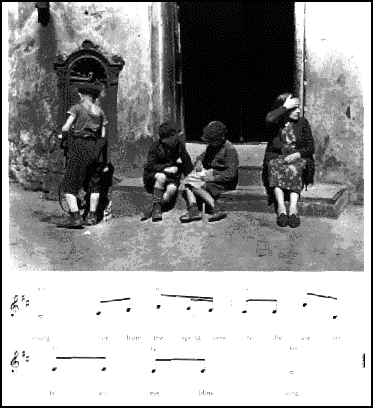
Natural Mind
The Essence of
Dzogchen in the Native
Bon Tradition of Tibet
Tenzin Wangyal Rinpoche
(Snow Lion)
Bon, as he tells us early on, is not Buddhism at all, because it comes from the other Buddha, Shenrab Miwoche. Reminding us of what some masters tell us --- that in the history of the world, and divinity, there were hundreds, perhaps thousands of Buddhas, and the one we call "the Buddha" was just one of the lesser godheads.
Anyway, Shenrab Miwoche taught 17,000 years ago making him, we dare say, the oldest master of them all. Despite that, it's rough seas in Bon-land. Most of the precepts presented by Rinpoche might be of some use to an advanced student, but for those of us down at the bottom of the ladder, it's heavy going:
For instance, a particular, momentary eye-consciousness of an apple has its own self-knowing, namely, that aspect of the awareness of the apple that is also conscious of itself....
Or, when we lose a yak, we don't lose a yak: "Not finding the yak is what we find."
It is when he is dealing with his own personal enlightenment that his words and works become accessible. Powa practice is meditation, by one's self, in the dark --- and can go on for a couple of months. During a retreat, he found his fontanelle (the soft spot at the top of the head) beginning to open.
Next morning when Lopon [his master] looked, he was at last able to insert a blade of kusha grass, which must stand upright in the hole in the fontanelle to demonstrate that the practice has been successful. The blade of grass was about twelve inches long and remained upright for three days. Sometimes I forgot I had it in my head and felt a painful sensation when I pulled my robe over my head, yanking the blade of grass. Also, if I walked in the street when it was windy, I felt as if an electric current were being channelled into the center of my body through the grass.
The powa created interesting visions, not unlike those described by people in sensory-deprivation tanks.
I saw a long-lasting vision of a nude woman with long hair sitting straight ahead of me but turned away so that I couldn't see her face. When I saw these visions, they were not something appearing externally; they were manifestations of my own mind in the form of light.
Gradually, towards the end of his seven week vigil, the visions began to merge with "reality:"
Once, in my mind's eye, I was aware of my mother bringing me food, "seeing" every step she took coming towards the house until she reached the door and knocked to tell me she had arrived. At the same time, I heard a knock on the door as my "real" mother told me she had come with my meal.
Even in his most technical (and mysterious) descriptions, Rinpoche has the ability to create symbols that --- for the persistent --- make his concepts accessible. For example, he tells us that there are eight signs that come with meditation to let one know that one is making progress, including "crabs thrown onto a table," "a little bird in a cold wind," and a turtle in water.
The first sign is like a turtle that, when put in a basin of water, retracts its limbs into its shell. The practitioner feels almost as if her mind cannot move. This is a sign that the mind is turning inwards.
A History of the World's
Most Controversial Surgery
David L. Gollaher
(Basic Books)
"What's the pay?"
"$50 a week."
"That's terrible!"
"Yeah, but I get tremendous tips."
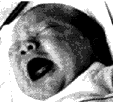 Except in the Jewish religion, circumcision was not much practiced until a hundred years ago. Then, three factors came to bring it into general favor. The first was that it was believed to be a prophylaxis against venereal disease. Secondly, it was believed to curb masturbation. And, third --- with the development of appropriate sanitary and anesthetic techniques, even minor surgery could be performed without destroying the patient. There were various doctors in England and in the United States who got on the circumcision bandwagon, in a manner of speaking, and gave rousing speeches on the subject. They believed that many of our ills, not only physical but mental, could be curbed by the little snip.
Except in the Jewish religion, circumcision was not much practiced until a hundred years ago. Then, three factors came to bring it into general favor. The first was that it was believed to be a prophylaxis against venereal disease. Secondly, it was believed to curb masturbation. And, third --- with the development of appropriate sanitary and anesthetic techniques, even minor surgery could be performed without destroying the patient. There were various doctors in England and in the United States who got on the circumcision bandwagon, in a manner of speaking, and gave rousing speeches on the subject. They believed that many of our ills, not only physical but mental, could be curbed by the little snip.
Trouble is, it has never been proved that the operation prevents diseases, and some of my friends report that it doesn't do squat to mitigate their non-stop onanism. 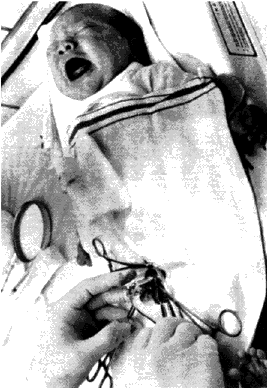 In fact, far from being a prophylaxis, it may have the opposite effect. In the same way that saliva protects the mouth against certain infections, the substance known as smegma that crops up under the foreskin may do the same for the glans. Smegma, by the way, is one of those words that just sounds revolting. It's from the Greek smechein, which means "to clean." Thus in Athens, your bottled household cleanser might well be labelled "Mr. Smegma." To add to the irony, the word has the same root as "to smite." Tell that to your doctor when he asks you if you want you new-born babe tied down on the cutting table and chopped up a bit.
In fact, far from being a prophylaxis, it may have the opposite effect. In the same way that saliva protects the mouth against certain infections, the substance known as smegma that crops up under the foreskin may do the same for the glans. Smegma, by the way, is one of those words that just sounds revolting. It's from the Greek smechein, which means "to clean." Thus in Athens, your bottled household cleanser might well be labelled "Mr. Smegma." To add to the irony, the word has the same root as "to smite." Tell that to your doctor when he asks you if you want you new-born babe tied down on the cutting table and chopped up a bit.
One chapter that macho men who have been circumcised may want to pass over is one that describes, in exquisite detail, the nerve endings in the prepuce --- what you lost when you were but a few days old, without your specific permission:
The distinctive corpuscles of the prepuce should be compared to similar nerve endings in the fingertips and lips...the conventional picture of the foreskin as a wrap protecting the glans should be reversed...with the ridged band working not only to intensify sensation but to help regulate the ejaculatory reflex.
This well- The English government stopped paying for the procedure shortly after WWII, and none of the young English boys --- now men --- seem any worse for wear. At one time American doctors were told to perform the operation without chloroform "so that the pain experienced may be associated with the habit [masturbation] we wish to eradicate."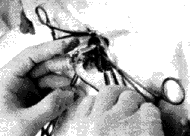 And John Harvey Kellogg, father of the Corn Flake and deadly enemy of onanism sans-gêne, wrote: "Without administering an anesthetic, as the pain attending the operation will have a salutary effect upon the mind, especially if connected with the idea of punishment."
And John Harvey Kellogg, father of the Corn Flake and deadly enemy of onanism sans-gêne, wrote: "Without administering an anesthetic, as the pain attending the operation will have a salutary effect upon the mind, especially if connected with the idea of punishment."